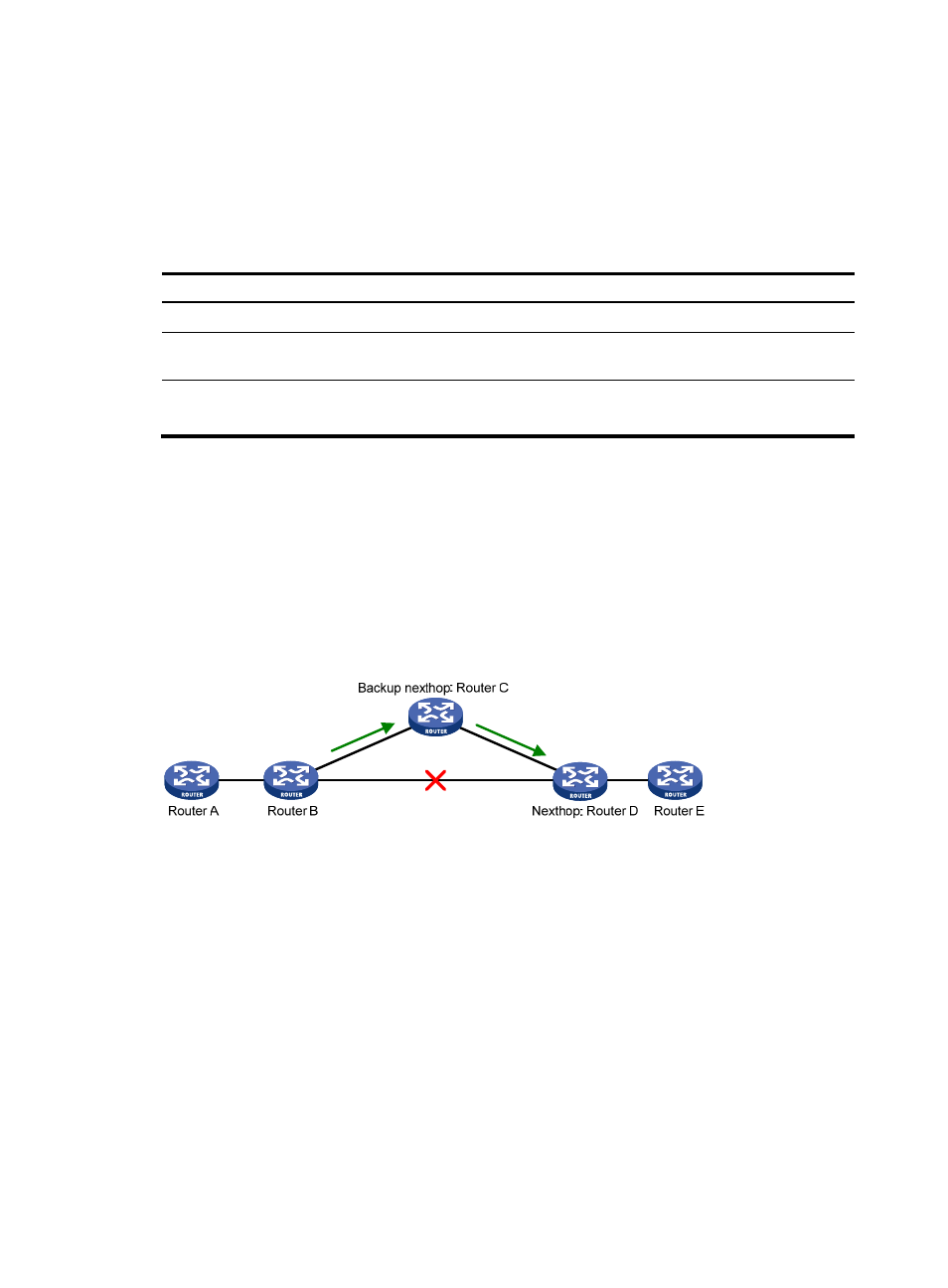Enabling ospf ispf, Configuring ospf frr, Introduction – H3C Technologies H3C S12500 Series Switches User Manual
Page 111: Configuration prerequisites, Configuration guidelines

95
Enabling OSPF ISPF
When a network topology is changed, Incremental Shortest Path First (ISPF) allows the system to
recompute only the affected part of the shortest path tree (SPT), instead of the entire SPT.
To enable OSPF ISPF:
Step Command
Remarks
1.
Enter system view.
system-view
N/A
2.
Enter OSPF view.
ospf [ process-id | router-id router-id |
vpn-instance vpn-instance-name ] *
N/A
3.
Enable OSPF ISPF
ispf enable
Optional.
Disabled by default.
Configuring OSPF FRR
Introduction
A link or router failure on a path can cause packet loss and even routing loop until OSPF completes
routing convergence based on the new network topology.
You can enable OSPF fast reroute (FRR) to solve this problem.
Figure 39 Network diagram
In
, after you enable FRR on Router B, OSPF automatically calculates or designates a backup
next hop when a link failure is detected. Packets are directed to the backup next hop. At the same time,
OSPF calculates the shortest path based on the new network topology, and forwards packets over the
path after routing convergence.
You can either configure OSPF FRR to calculate a backup next hop automatically, or designate a backup
next hop by using a routing policy.
Configuration prerequisites
Before you configure OSPF FRR, complete the following tasks:
•
Configure network layer addresses for interfaces to ensure IP connectivity between neighboring
nodes.
•
Enable OSPF.
Configuration guidelines
•
Do not use FRR and BFD at the same time. Otherwise, FRR might fail to take effect.